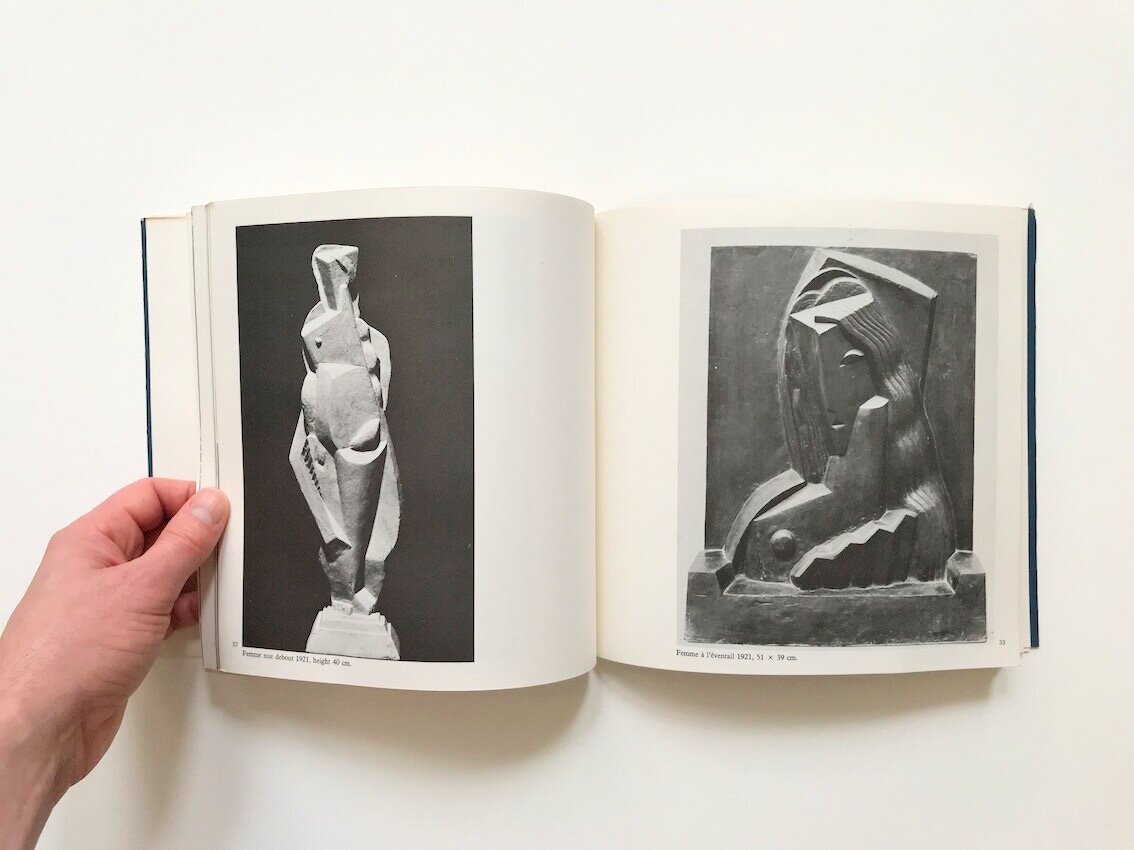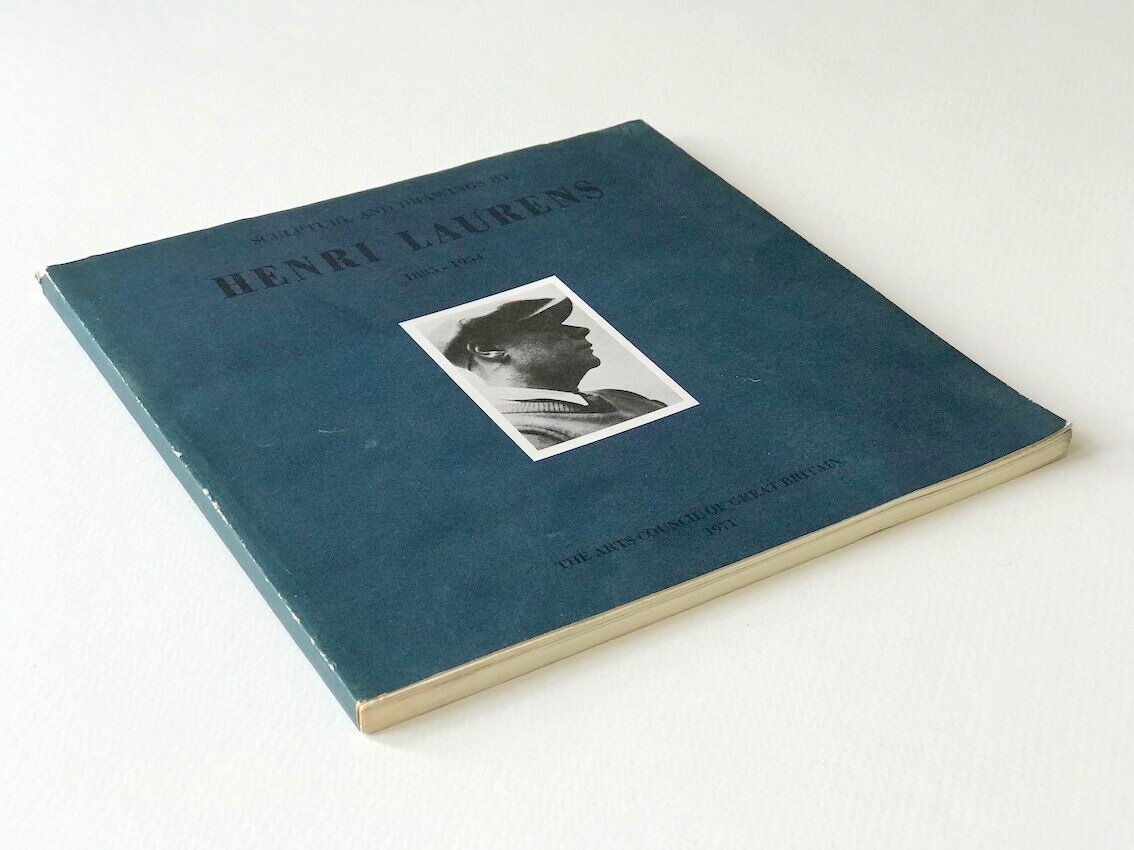Tantra. Hayward Gallery, London, 1971
First printing copy of this substantial 130 page, fully illustrated catalogue of the first major exhibition of Tantra to be held anywhere in the Western world – Hayward Gallery, London, 30 September – 7 November, 1971. Over 560 images including a large tipped-in colour gatefold to the inside back cover.
Title: Tantra
Author: Philip Rawson
Publisher: Arts Council of Great Britain
Publication date: 1971 (First edition, one of only 5000 copies from the first printing)
Format: Softcover
Pages: 130
Condition: Very Good. Discolouration to covers. Nicks to spine. Otherwise very good.
Stock Number: RB01252
Organised by Philip Rawson who at the time was Keeper of the Gulbenkian Museum of Oriental Art at the University of Durham, and Ajit Mookerjee, Director at the Crafts Museum, New Delhi (from whose collection the exhibition was assembled) this acclaimed exhibition played a large part in the widespread interest in Tantra in the 1970s.
As Rawson writes in his introduction “Tantra is a special manifestation of Indian feeling, art and religion … There can be no quick and easy definitions … However, there is one thread which can guide us through the labyrinth … the idea that Tantra is a cult of ecstasy, focused on a vision of cosmic sexuality. Life-style, ritual, magic, myth, philosophy and a complex of signs and emotive symbols converge upon that vision.” [Tantra, Arts Council of Great Britain, p.5]
I’m grateful to Seth McCormick whose article on Jasper Johns and Tantric Art published in the Tate Research Papers provides the following background information:
Around 1967 the British Tantra researcher Nik Douglas was assisting Ajit Mookerjee with the organisation of his private collection. At the time Mookerjee had recently published the book Tantra Art: Its Philosophy and Physics. Douglas and Mookerjee began planning a film on the subject for which Douglas was tasked with finding a sponsor. Douglas approached the gallerist Robert Fraser who convinced Mick Jagger to provide the financial backing for the film by hiring Kenneth Anger as director. Robert Fraser later introduced Douglas to the Secretary-General of the Arts Council of Great Britain, Hugh Shaw, a meeting which led ultimately to the 1971 Hayward Tantra exhibition, the first major exhibition of Tantric art in the West. McCormick adds that “Following the Hayward exhibition, Mookerjee published The Tantric Way: Art, Science, Ritual (1977) with Madhu Khanna), which highlights the parallels between Tantric art and the early twentieth-century modernist abstractions of Paul Klee, Piet Mondrian, Constantin Brancusi and Robert Delaunay, as well as the affinities between the post-war American painters Ad Reinhardt, Mark Rothko and Barnett Newman and the work of Indian artist Biren De.” (1)
In an interview with Hettie Judah published in the Guardian on the 4th of Novemebr 2020 the artist Penny Slinger described how she was heavily influenced by the Hayward show in 1971: “When I walked into that amazing exhibit, I felt I had ‘come home’,” she recalls. “It was a sense of total recognition.” The iconography and philosophy of Tantra is rooted in the concept of shakti – feminine energy. “Unlike much of our western definition of what is feminine, it is an active principle, an energy force underlying and underpinning all creation,” explains Slinger. “As such, shakti presents a vehicle for the manifestation of the feminine that is unshackled, unrestrained and brimming with potential.” (2)
Hettie Judah’s article was prompted by The British Museum’s exhibition “Tantra: enlightenment to revolution” (24 September 2020 – 24 January 2021) marking 50 years since the Hayward’s ground-breaking Tantra exhibition. Positioned as the first ‘historical’ presentation of Tantric visual culture in Britain, it represented a coded critique of the Hayward show’s emphasis on the ‘Indian cult of ecstasy’ which, inflected by countercultural predilections and an interest in sexual liberation, set the tone for Tantra’s popular reception in Britain throughout the 1970s.
Seth McCormick, ‘Incarnating Duality: Jasper Johns and Tantric Art’, in Katherine Markoski (ed.), In Focus: Dancers on a Plane 1980–1 by Jasper Johns, Tate Research Publication, 2017, https://www.tate.org.uk/research/publications/in-focus/dancers-on-a-plane/incarnating-duality, accessed 14 November 2021.
Hettie Judah "The occult's return to art: 'Before, you'd have been laughed out of the gallery’” The Guardian, Wed 4 Nov 2020. https://www.theguardian.com/artanddesign/2020/nov/04/spiritualitys-return-to-art-before-youd-have-been-laughed-out-of-the-gallery
First printing copy of this substantial 130 page, fully illustrated catalogue of the first major exhibition of Tantra to be held anywhere in the Western world – Hayward Gallery, London, 30 September – 7 November, 1971. Over 560 images including a large tipped-in colour gatefold to the inside back cover.
Title: Tantra
Author: Philip Rawson
Publisher: Arts Council of Great Britain
Publication date: 1971 (First edition, one of only 5000 copies from the first printing)
Format: Softcover
Pages: 130
Condition: Very Good. Discolouration to covers. Nicks to spine. Otherwise very good.
Stock Number: RB01252
Organised by Philip Rawson who at the time was Keeper of the Gulbenkian Museum of Oriental Art at the University of Durham, and Ajit Mookerjee, Director at the Crafts Museum, New Delhi (from whose collection the exhibition was assembled) this acclaimed exhibition played a large part in the widespread interest in Tantra in the 1970s.
As Rawson writes in his introduction “Tantra is a special manifestation of Indian feeling, art and religion … There can be no quick and easy definitions … However, there is one thread which can guide us through the labyrinth … the idea that Tantra is a cult of ecstasy, focused on a vision of cosmic sexuality. Life-style, ritual, magic, myth, philosophy and a complex of signs and emotive symbols converge upon that vision.” [Tantra, Arts Council of Great Britain, p.5]
I’m grateful to Seth McCormick whose article on Jasper Johns and Tantric Art published in the Tate Research Papers provides the following background information:
Around 1967 the British Tantra researcher Nik Douglas was assisting Ajit Mookerjee with the organisation of his private collection. At the time Mookerjee had recently published the book Tantra Art: Its Philosophy and Physics. Douglas and Mookerjee began planning a film on the subject for which Douglas was tasked with finding a sponsor. Douglas approached the gallerist Robert Fraser who convinced Mick Jagger to provide the financial backing for the film by hiring Kenneth Anger as director. Robert Fraser later introduced Douglas to the Secretary-General of the Arts Council of Great Britain, Hugh Shaw, a meeting which led ultimately to the 1971 Hayward Tantra exhibition, the first major exhibition of Tantric art in the West. McCormick adds that “Following the Hayward exhibition, Mookerjee published The Tantric Way: Art, Science, Ritual (1977) with Madhu Khanna), which highlights the parallels between Tantric art and the early twentieth-century modernist abstractions of Paul Klee, Piet Mondrian, Constantin Brancusi and Robert Delaunay, as well as the affinities between the post-war American painters Ad Reinhardt, Mark Rothko and Barnett Newman and the work of Indian artist Biren De.” (1)
In an interview with Hettie Judah published in the Guardian on the 4th of Novemebr 2020 the artist Penny Slinger described how she was heavily influenced by the Hayward show in 1971: “When I walked into that amazing exhibit, I felt I had ‘come home’,” she recalls. “It was a sense of total recognition.” The iconography and philosophy of Tantra is rooted in the concept of shakti – feminine energy. “Unlike much of our western definition of what is feminine, it is an active principle, an energy force underlying and underpinning all creation,” explains Slinger. “As such, shakti presents a vehicle for the manifestation of the feminine that is unshackled, unrestrained and brimming with potential.” (2)
Hettie Judah’s article was prompted by The British Museum’s exhibition “Tantra: enlightenment to revolution” (24 September 2020 – 24 January 2021) marking 50 years since the Hayward’s ground-breaking Tantra exhibition. Positioned as the first ‘historical’ presentation of Tantric visual culture in Britain, it represented a coded critique of the Hayward show’s emphasis on the ‘Indian cult of ecstasy’ which, inflected by countercultural predilections and an interest in sexual liberation, set the tone for Tantra’s popular reception in Britain throughout the 1970s.
Seth McCormick, ‘Incarnating Duality: Jasper Johns and Tantric Art’, in Katherine Markoski (ed.), In Focus: Dancers on a Plane 1980–1 by Jasper Johns, Tate Research Publication, 2017, https://www.tate.org.uk/research/publications/in-focus/dancers-on-a-plane/incarnating-duality, accessed 14 November 2021.
Hettie Judah "The occult's return to art: 'Before, you'd have been laughed out of the gallery’” The Guardian, Wed 4 Nov 2020. https://www.theguardian.com/artanddesign/2020/nov/04/spiritualitys-return-to-art-before-youd-have-been-laughed-out-of-the-gallery
First printing copy of this substantial 130 page, fully illustrated catalogue of the first major exhibition of Tantra to be held anywhere in the Western world – Hayward Gallery, London, 30 September – 7 November, 1971. Over 560 images including a large tipped-in colour gatefold to the inside back cover.
Title: Tantra
Author: Philip Rawson
Publisher: Arts Council of Great Britain
Publication date: 1971 (First edition, one of only 5000 copies from the first printing)
Format: Softcover
Pages: 130
Condition: Very Good. Discolouration to covers. Nicks to spine. Otherwise very good.
Stock Number: RB01252
Organised by Philip Rawson who at the time was Keeper of the Gulbenkian Museum of Oriental Art at the University of Durham, and Ajit Mookerjee, Director at the Crafts Museum, New Delhi (from whose collection the exhibition was assembled) this acclaimed exhibition played a large part in the widespread interest in Tantra in the 1970s.
As Rawson writes in his introduction “Tantra is a special manifestation of Indian feeling, art and religion … There can be no quick and easy definitions … However, there is one thread which can guide us through the labyrinth … the idea that Tantra is a cult of ecstasy, focused on a vision of cosmic sexuality. Life-style, ritual, magic, myth, philosophy and a complex of signs and emotive symbols converge upon that vision.” [Tantra, Arts Council of Great Britain, p.5]
I’m grateful to Seth McCormick whose article on Jasper Johns and Tantric Art published in the Tate Research Papers provides the following background information:
Around 1967 the British Tantra researcher Nik Douglas was assisting Ajit Mookerjee with the organisation of his private collection. At the time Mookerjee had recently published the book Tantra Art: Its Philosophy and Physics. Douglas and Mookerjee began planning a film on the subject for which Douglas was tasked with finding a sponsor. Douglas approached the gallerist Robert Fraser who convinced Mick Jagger to provide the financial backing for the film by hiring Kenneth Anger as director. Robert Fraser later introduced Douglas to the Secretary-General of the Arts Council of Great Britain, Hugh Shaw, a meeting which led ultimately to the 1971 Hayward Tantra exhibition, the first major exhibition of Tantric art in the West. McCormick adds that “Following the Hayward exhibition, Mookerjee published The Tantric Way: Art, Science, Ritual (1977) with Madhu Khanna), which highlights the parallels between Tantric art and the early twentieth-century modernist abstractions of Paul Klee, Piet Mondrian, Constantin Brancusi and Robert Delaunay, as well as the affinities between the post-war American painters Ad Reinhardt, Mark Rothko and Barnett Newman and the work of Indian artist Biren De.” (1)
In an interview with Hettie Judah published in the Guardian on the 4th of Novemebr 2020 the artist Penny Slinger described how she was heavily influenced by the Hayward show in 1971: “When I walked into that amazing exhibit, I felt I had ‘come home’,” she recalls. “It was a sense of total recognition.” The iconography and philosophy of Tantra is rooted in the concept of shakti – feminine energy. “Unlike much of our western definition of what is feminine, it is an active principle, an energy force underlying and underpinning all creation,” explains Slinger. “As such, shakti presents a vehicle for the manifestation of the feminine that is unshackled, unrestrained and brimming with potential.” (2)
Hettie Judah’s article was prompted by The British Museum’s exhibition “Tantra: enlightenment to revolution” (24 September 2020 – 24 January 2021) marking 50 years since the Hayward’s ground-breaking Tantra exhibition. Positioned as the first ‘historical’ presentation of Tantric visual culture in Britain, it represented a coded critique of the Hayward show’s emphasis on the ‘Indian cult of ecstasy’ which, inflected by countercultural predilections and an interest in sexual liberation, set the tone for Tantra’s popular reception in Britain throughout the 1970s.
Seth McCormick, ‘Incarnating Duality: Jasper Johns and Tantric Art’, in Katherine Markoski (ed.), In Focus: Dancers on a Plane 1980–1 by Jasper Johns, Tate Research Publication, 2017, https://www.tate.org.uk/research/publications/in-focus/dancers-on-a-plane/incarnating-duality, accessed 14 November 2021.
Hettie Judah "The occult's return to art: 'Before, you'd have been laughed out of the gallery’” The Guardian, Wed 4 Nov 2020. https://www.theguardian.com/artanddesign/2020/nov/04/spiritualitys-return-to-art-before-youd-have-been-laughed-out-of-the-gallery


















